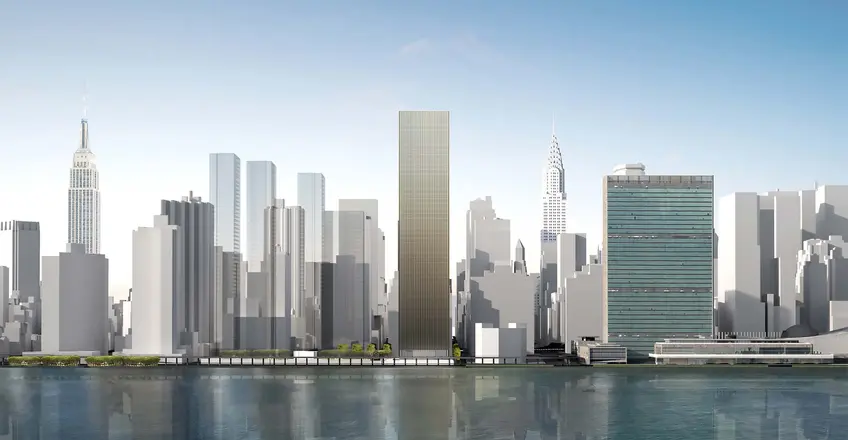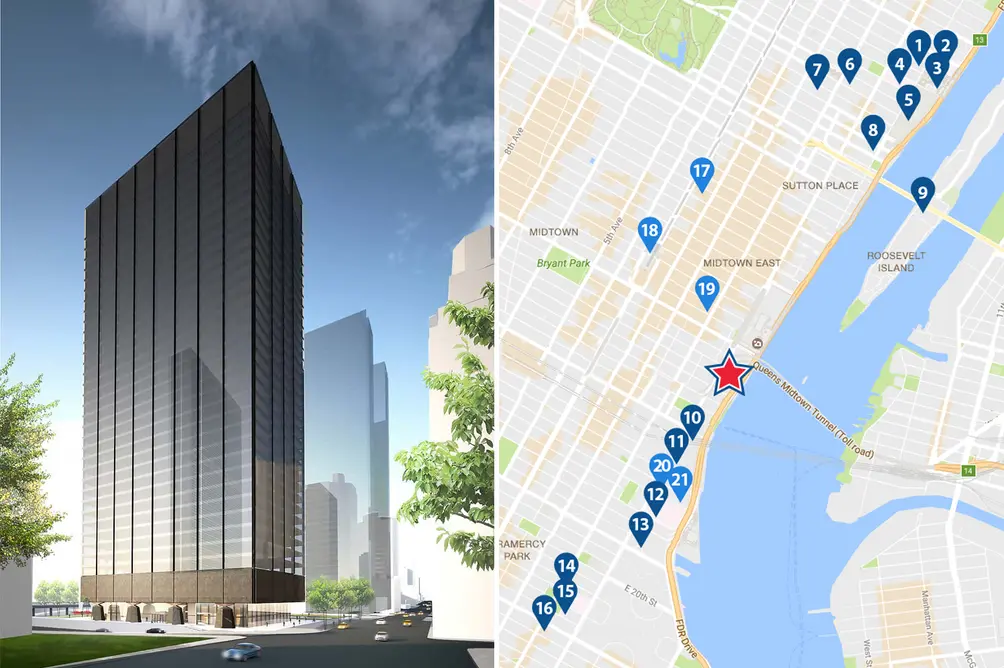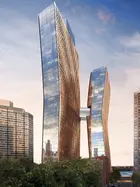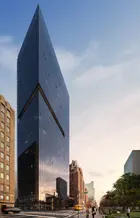 The New York Life Sciences and Biotechnology Center
The New York Life Sciences and Biotechnology Center
Plans have emerged for a 1.35 MSF life sciences and biotechnology center along Manhattan’s east side. Proposed by Solow Realty & Development, the 35-floor building would rise at 708 First Avenue along Solow’s fallow Turtle Bay South superblock. The new, state-of-the-art tower is being designed by SOM, who was also responsible for crafting the 9-acre Turtle Bay South master plan. So far, the only towers to rise on the original Con Ed footprint are the American Copper Buildings and the nearly topped out 685 First Avenue.
According to the new website marketing the center, the building will include flexible wet and dry laboratory space as well as build to suit Class A offices and private laboratory suites. The Center may also include a business accelerator or incubator program which will provide seed financing for early stage life sciences and biotechnology companies.
In this article:
Renderings show a simple bronze-prism rising a bit taller than the United Nations Secretariat Building. Height limits demanded by the local community board and City Council limit the superblock's buildings to 595 feet. The forthcoming tower’s amenities are to include conference centers, fitness facilities, restaurants and engaging common spaces, that promote synergistic opportunities and encourage tenant interaction. Corcoran’s Wexler Healthcare Properties Team is handling leasing.
Late last year, Mayor Bill de Blasio unveiled a $500 million initiative to give the city’s latent life science industry a shot in the arm. According to a December article by Crain’s New York, the administration hopes to create 16,000 jobs and build an applied life sciences campus that will help the city compete with the ecosystems in New England and Silicon Alley.
 708 First Avenue
708 First Avenue
Some aspects of the plan include allocating $20M to invest in early-stage companies and to provide $7.5 million to create 1,000 paid internships at local life science employers. Foremost of all however, is to incentivize the creation of new lab space. In a press release, Maria Torres-Springer, president and chief executive of the city's Economic Development Corp. says the city’s Achilles heel has been its inability to create a physical hub that brings together researchers, innovators, entrepreneurs, experienced business leaders, financing and a pipeline of talent.
To help remedy the situation, the city is offering $50 million to the city's research institutions and academic medical centers to build more space for research labs. The city is also providing a $300 million tax incentive to encourage the building of commercial lab space. Altogether, the city has a lofty goal of creating 3 million square feet of new life sciences inventory that they hope will available at accessible rents.
Would you like to tour any of these properties?



 6sqft delivers the latest on real estate, architecture, and design, straight from New York City.
6sqft delivers the latest on real estate, architecture, and design, straight from New York City.
